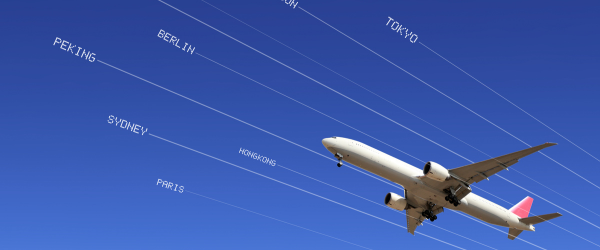As the aviation industry and pricing start to normalise after the post-pandemic travel boom, a new, elevated baseline is reflecting the current cost of business travel. Travel managers can now start to make sense of their air travel programme and readdress negotiations to ensure they are getting maximum value. Here’s a quick guide to negotiating a winning corporate travel air programme in 2025.
The Current Landscape
Global airline traffic has eventually passed pre-Covid levels, at 5.7% above the 2019 numbers. However, despite airline recovery around the world, their yields are coming under increased pressure due to the fact that there are more airlines in the sky and, therefore, more capacity in the market.
As they contend with lower average yields, airlines are more energetically seeking to attract corporate business. Airlines are starting to realise that corporate business travel offers more regular and predictable volumes than holiday travel, and they’re now prepared to revise their discount proposals. This landscape puts companies in a stronger position to revisit partnerships and renegotiate contracts.
Preparation is Key
Successful negotiation with suppliers requires a strategic approach. To show the value you add to the supplier, gather comprehensive data about your organisation’s travel patterns to support your negotiations. This includes:
- Travel spend: Review travel data from the past 12-24 months. Include total travel spend, top travel destinations, class of travel and seasonal peak travel periods.
- Travel projections: Prepare a forecast of your travel needs, including proposed market expansions. Airlines will want to know how much incremental business they will get if they give your company a discount.
Elements to Consider
When structuring your air programmeme, focus on these critical components:
- Route coverage: Different airlines dominate different regions. Build relationships with carriers that complement each other’s networks to ensure comprehensive coverage. Diversifying your airline partners helps mitigate risks associated with airline-specific issues or regional disruptions.
- Leverage your travel volume: Rather than opting for the highest discounts on your chosen routes, try to balance discounts that align with actual travel patterns. For example, rather negotiate free booking changes if you have to alter travel plans frequently. This way, you save on the cost of change rather than on upfront discounts.
- Risk management: Negotiate favourable cancellation policies and ensure your agreement includes force majeure clauses that protect your business during unforeseen circumstances.
- Sustainability incentives: Look for airlines that offer sustainable solutions, like those that use sustainable aviation fuel or operate more fuel-efficient aircraft.
- Ancillary benefits: Beyond fare discounts, negotiate add-ons such as lounge access, priority check-in and extra baggage allowance for your travellers.
Best Practice for Negotiations
It is a good idea to start negotiations 4 – 6 months before your existing agreement expires.
Include your travel management company, as they have strong relationships with suppliers and an intimate knowledge of the travel landscape. They can help you negotiate the best deals for your objectives and offer you access to their own negotiated discounts by leveraging their buying power.
Once an agreement is reached, ensure that you track your support, savings achieved and traveller satisfaction with the suppliers. Schedule regular reviews to monitor programme performance and make necessary adjustments.
The travel market is dynamic, so it is very important to stay up to date with industry and airline developments and then adjust your programme to take advantage of new opportunities. Remember that the most successful air programmes are those that evolve with your organisation’s needs.

